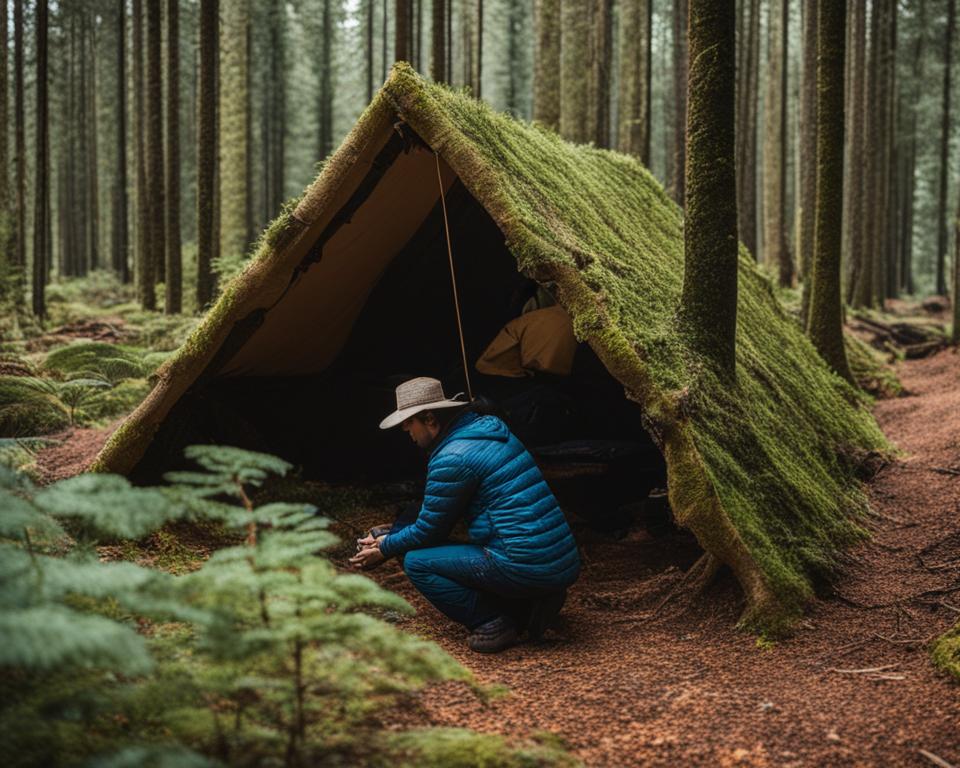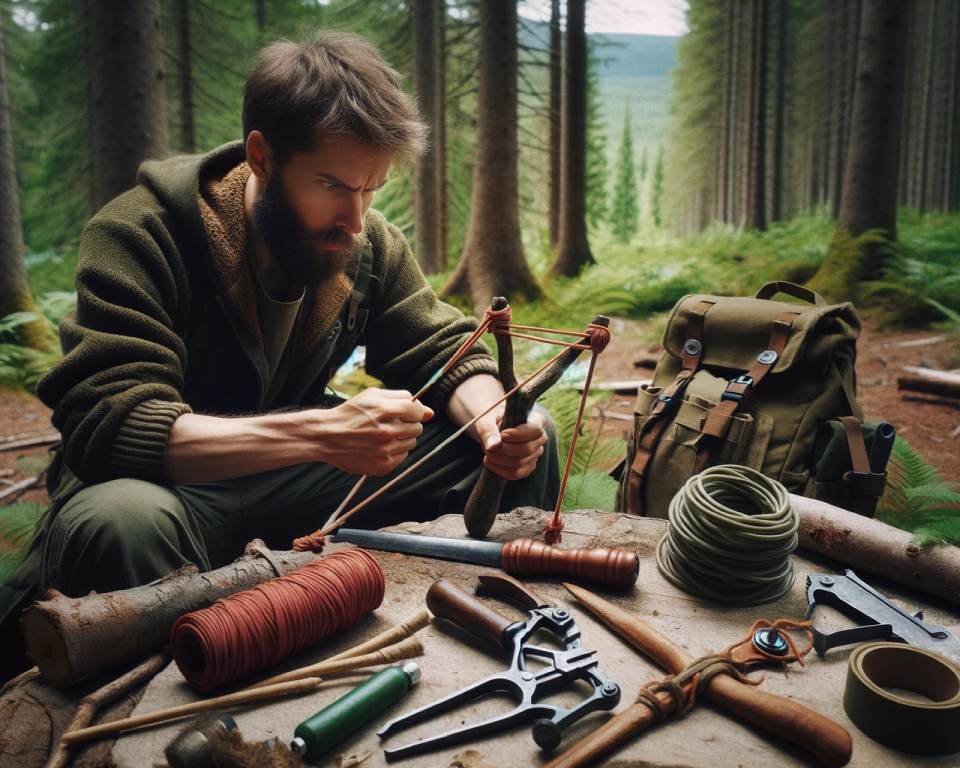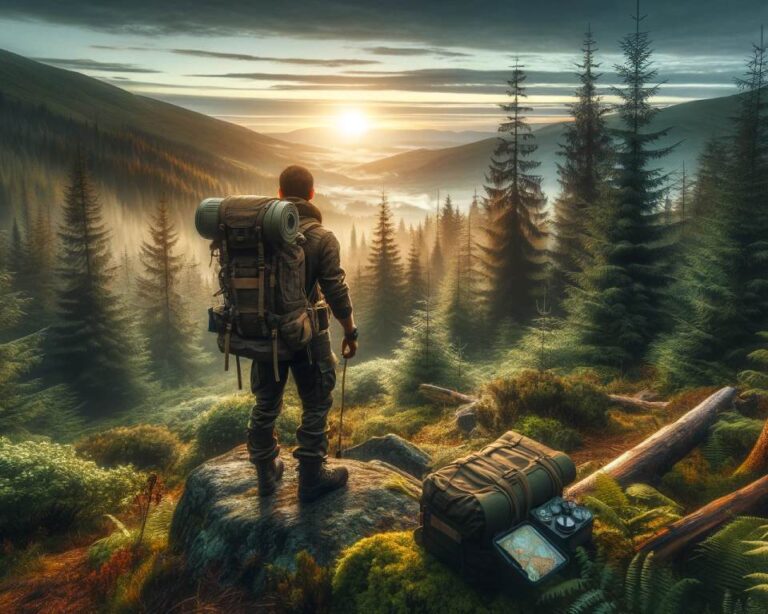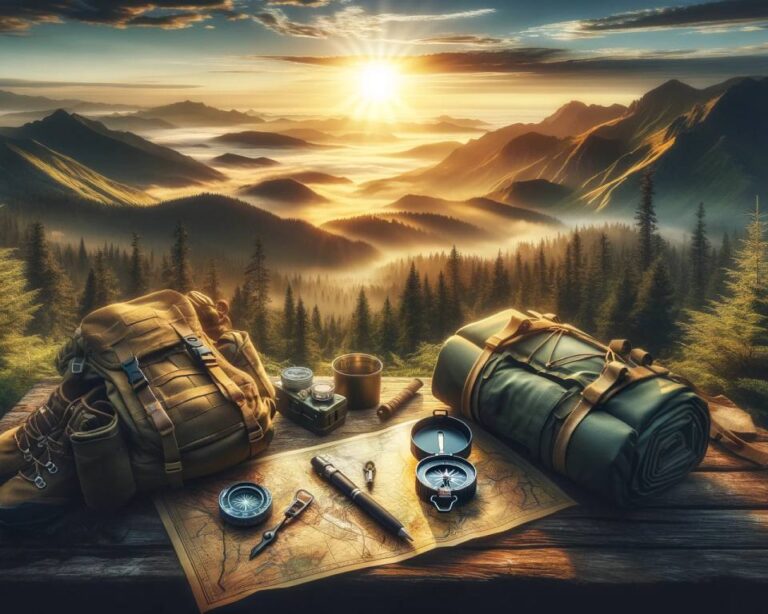Learning Wilderness Survival Skills
Welcome to Survival Literature, your ultimate guide to mastering the art of wilderness survival. Whether you’re an outdoor enthusiast, a thrill seeker, or simply someone who wants to be prepared for any adventure that comes your way, learning essential survival skills is crucial. In this series, we will explore a range of topics that will equip you with the knowledge needed to thrive in the wild.
In section 1, we will start by delving into the fundamentals of wilderness survival. By learning and practicing these skills, you can prepare yourself for any outdoor adventure, ensuring your safety and peace of mind. From building a fire to creating potable water, foraging for food to tying knots, we will cover it all. Don’t wait until you find yourself stranded in the wilderness to put these skills into practice. Start preparing now, right in your own backyard.
Join us as we embark on this exciting journey of learning and discovery. Let’s equip ourselves with the knowledge and skills needed to thrive in the great outdoors. Whether you’re planning a camping trip, a hiking expedition, or simply want to be prepared for any situation life throws at you, our comprehensive guide to wilderness survival has got you covered. Stay tuned for section 1, where we kick off our exploration of essential survival skills.
Building a Fire
In survival situations, knowing how to build a fire is a critical skill. Fire provides warmth, protection from predators, and the ability to cook food. By practicing fire-building techniques in our own backyard, we can develop the necessary skills to handle emergency situations.
One of the essential fire-building skills is carving a feather stick. This technique involves carefully removing thin curls of wood from a stick to maximize surface area and create a highly flammable tinder bundle. Practice this skill by using a sharp knife to carve feathers along a stick.
Another valuable skill is identifying and utilizing natural fire-starting materials, such as the amadou fungus. This tinder fungus can be found on dead birch trees and has exceptional fire-starting properties. Collect and dry amadou fungus in our backyard, so we can rely on this resource in an emergency.
To ignite a fire without matches, we need to learn how to create sparks using quartz and flint. This technique, known as flint and steel, involves striking quartz against a piece of flint to produce sparks that can ignite the tinder bundle. Practice this technique in our backyard until we can consistently create sparks and ignite a fire.
“Fire is the most important component of survival. It provides warmth, light, security, and the ability to cook. Without fire, our chances of survival diminish significantly.”
By honing our fire-building skills through regular practice in our own backyard, we can become proficient in emergency fire-making techniques. This preparation ensures that we can efficiently build fires when faced with challenging situations in the wilderness.
Creating Potable Water
Sourcing clean drinking water is essential for survival. In a wilderness situation, natural water sources may not be safe. We must rely on various techniques to purify water and make it potable.
One of the simplest methods is boiling the water. Boiling water kills most pathogens and makes it safe to drink. Remember to bring the water to a rolling boil for at least one minute to ensure its safety.
Another method is filtration. You can use a simple cloth, like a t-shirt, to filter out large particles and debris. However, be aware that this method does not remove all pathogens, and it’s best to combine it with other water purification techniques.
“Filtration systems are an effective way to purify water.”
A more advanced technique is building a filtration system. You can create a makeshift filter using materials like charcoal, sand, and river rocks. The layers of these materials help remove impurities and improve the quality of the water.
- Start by creating a container with a small hole at the bottom.
- Place a layer of charcoal at the bottom of the container.
- Add a layer of sand on top of the charcoal.
- Finish with a layer of river rocks.
- Pour the water through the top of the container and collect it at the bottom.
This filtration system helps remove sediment, bacteria, and some chemicals, making the water safer to drink.
The Solar Still Method
Another technique to obtain potable water is building a solar still. This method is useful when you have limited resources and need to draw water from the earth.
Start by digging a hole in the ground and placing a container in the center. Cover the hole with a plastic sheet, ensuring it is tightly sealed around the edges. Place a small rock in the center of the sheet, creating a dip that directs condensation towards the container.
As the sun heats the ground, the water evaporates and condenses on the plastic sheet. It then drips into the container, providing you with clean, drinkable water.
Practicing these techniques at home can help you prepare for survival situations where access to clean water is limited. Remember, survival literature emphasizes the importance of water purification and teaches us valuable survival techniques.
Foraging for Food
In a survival situation, finding food is crucial. Many edible wild plants are available in your own backyard or neighborhood.
Take the time to learn how to identify edible plants like stinging nettle, dandelion, lamb’s quarters, and miner’s lettuce. These plants are abundant in the wild and can be a valuable source of nutrition in survival situations.
“Foraging for food can provide a low-impact source of energy and nutrients in survival situations.”
However, it’s important to exercise caution and accuracy in plant identification. Some wild plants can be toxic or cause adverse reactions if consumed.
Identifying Edible Plants
When foraging for food, proper plant identification is key. Here are some tips to help you:
- Invest in a reliable field guide on edible plants or enroll in a survival literature course to expand your knowledge.
- Attend workshops or join local foraging groups to learn from experienced foragers and gain hands-on experience.
- Study the characteristics of edible plants, such as leaf shape, color, and growth pattern.
- Learn about common look-alike plants and their potential dangers.
- Start with easily identifiable and common edible plants before moving on to more challenging species.
Safe Foraging Techniques
When gathering edible plants from the wild, follow these guidelines:
- Only harvest plants that you can confidently identify as safe and edible.
- Collect plants from areas that have not been treated with pesticides or pollutants.
- Take only what you need to avoid depleting natural resources and respect the environment.
- Be mindful of endangered or protected plant species and avoid collecting them.
- Always wash and thoroughly cook wild plants to eliminate potential contaminants.
Foraging for food is not only a practical survival skill but also a way to connect with nature and gain a deeper understanding of our environment. By familiarizing yourself with edible plants and practicing foraging techniques, you can enhance your self-sufficiency in the outdoors.
Tying Knots
Knot-tying is a crucial skill to master in survival situations. Whether you’re building a shelter, setting snares, or creating tools, knowing the right knots can make all the difference. Practice tying secure knots using various types of ropes and learn different knot-tying techniques to expand your repertoire. By honing your knot-tying skills, you can increase your chances of survival in the wilderness.
The Importance of Knots in Survival
Tying knots is an often-overlooked aspect of survival literature, but it plays a significant role in various survival scenarios. Here are a few key ways knot-tying skills are useful:
- Shelter Building: Knots are essential for constructing sturdy shelters. You need secure knots to tie ropes to trees or anchor your shelter to the ground, ensuring it withstands challenging weather conditions.
- Tool Creation: From crafting fishing nets to making traps, knots are crucial for creating survival tools. The right knot can ensure the strength and functionality of these tools in the wild.
- Snare Setting: Setting snares requires precise knot-tying skills. By mastering different knots, you’ll be able to set effective snares for trapping small game, providing a valuable source of food.
Practicing Knot-Tying Skills
To become proficient in knot-tying, it’s essential to practice regularly. Start with basic knots like the square knot, clove hitch, and taut-line hitch. Then, move on to more complex knots like the bowline and double sheet bend. The more you practice, the more confident and skilled you’ll become.
Remember, each knot serves a specific purpose, so it’s crucial to use the right knot for the job. Take the time to learn when and how to use different knots in various survival situations.
Learning knot-tying skills isn’t just about survival—it’s also a fun and practical hobby. Invest in a good quality rope and practice tying knots during your outdoor adventures or even in your own backyard. Knot-tying is a valuable skill that can enhance your survival abilities and provide a sense of accomplishment.
Making a Weapon
In a survival situation, it is essential to have a weapon for self-defense. Learning how to make a slingshot can provide you with a versatile and efficient tool for survival. With just a few basic materials like a forked stick, rubber tubing, and leather, you can create a simple yet effective slingshot.
To start, find a sturdy forked stick that is about the length of your forearm. Make sure the forks are intact and not cracked. Next, attach rubber tubing to each fork of the stick, creating the elastic bands of the slingshot. This will provide the necessary tension to propel your ammunition.
Now, cut a strip of leather that is about 6 to 8 inches long and 1 inch wide. This will serve as the pocket of the slingshot, holding your ammunition in place. Attach one end of the leather strip to each side of the rubber tubing, creating a triangle-shaped pocket in the center.
Once your slingshot is assembled, it’s time to practice your aim and shooting skills. Find a safe area in your backyard where you can set up targets. Start by aiming at stationary objects and gradually increase the difficulty by practicing with moving targets.
Remember to always prioritize safety when using a slingshot. Wear eye protection and make sure your shooting area is clear of people or animals. Proper ammunition can include small rocks or marbles, but be cautious not to shoot anything that can cause unnecessary harm or damage.
Benefits of Slingshot Making
Making a slingshot as a survival tool offers several advantages. Firstly, it is a lightweight and portable weapon that can easily fit in your pocket. This means you can have it with you at all times, providing instant access to self-defense capabilities.
Additionally, a slingshot can be used for various purposes beyond self-defense. It can help you hunt small game by accurately launching ammunition, increasing your chances of securing food in a survival scenario. The slingshot can also serve as a signaling device, allowing you to attract attention from potential rescuers.
By mastering the art of slingshot making and improving your shooting skills, you enhance your overall survival readiness. The ability to create a weapon from natural materials gives you a sense of self-reliance and resourcefulness. So, start practicing and honing your slingshot skills today to improve your chances of survival in the wilderness.
Building a Shelter
Finding shelter is one of the first tasks in a survival situation. We must protect ourselves from the harsh elements and create a safe space to rest and recover. Building a shelter is a vital skill that can make the difference between life and death in the wilderness.
Creating a makeshift shelter in your own backyard is the perfect way to practice and refine your shelter construction abilities. Start with a basic lean-to or tarp-tent, using branches and a tarpaulin to create a simple yet effective shelter. Experiment with different configurations and anchoring methods to improve stability.
As you gain confidence and experience, progress to more advanced techniques, such as lashing together long branches to form a teepee-style shelter. This fort-building skill allows for a larger and more secure shelter that can withstand harsh weather conditions.
“A strong shelter is like a fortress that shields us from nature’s fury.”
If you live in a snowy region, it is crucial to practice building a snow cave shelter. This winter survival skill involves digging into a snowbank or mound, creating a small cave-like space that insulates against the cold. Learn the proper techniques for digging and shaping the snow, ensuring stability and ventilation.
Making the most of natural resources and utilizing your fort-building skills can greatly increase your chances of survival in a harsh outdoor environment. Remember, practice makes perfect, so keep honing your shelter-building abilities, and you’ll be well-equipped to face any survival situation that comes your way.
Basic First Aid
In the wilderness, access to emergency services may be limited. It is essential to have basic first aid skills to handle injuries and medical emergencies. By learning and practicing these skills, you can potentially save lives in survival situations.
Here are some important first aid techniques to master:
- CPR: Cardiopulmonary resuscitation (CPR) is a life-saving technique used to revive someone in cardiac arrest. Learn how to perform proper chest compressions and rescue breaths.
- Controlling bleeding: In emergency situations, knowing how to stop or control bleeding is crucial. Master techniques like applying direct pressure, elevating the injured limb, and using pressure points to slow down bleeding.
- Treating burns: Burns can happen in the wilderness due to fire accidents or exposure to extreme heat. Learn how to assess the severity of burns and provide appropriate first aid, such as cooling the burn with water and covering it with a clean cloth.
- Stabilizing limbs: In case of fractures or dislocations, immobilizing the injured limb is important to prevent further damage or pain. Learn how to splint limbs using available materials like sticks, clothing, or blankets.
- Soothing plants for insect stings and abrasions: Some plants have natural soothing properties that can provide relief from insect stings or minor abrasions. Familiarize yourself with plants like aloe vera or chamomile, which can help calm skin irritations.
Having a basic first aid kit with important supplies like bandages, antiseptic wipes, and pain relievers is also essential for emergency preparedness.
“In a survival situation, being equipped with basic first aid skills is like having a superpower. It gives us the ability to provide immediate care and comfort to ourselves and others when medical help is not readily available.”
Remember, survival literature often emphasizes the importance of acquiring first aid skills for emergency situations. By being well-prepared and knowledgeable in first aid, you can be a lifesaver in wilderness adventures and potentially make a life-changing difference.
Fishing and Trapping
In a survival situation, obtaining food is essential. Practice setting snares to catch small game and learn different fishing techniques. Mastering these skills can provide valuable sources of protein with minimal energy expenditure.
When it comes to survival fishing, there are various methods you can employ. You can try your hand at traditional rod and reel fishing or explore alternative techniques such as spearfishing or handline fishing. Each technique has its advantages and may be more effective in specific environments or situations.
Snare setting is another valuable skill to learn. Snares are simple traps that can be used to catch small animals. Practice setting snares using basic materials like cordage and sticks. Remember to always prioritize the humane treatment of animals and never set traps that could harm larger or protected species.
Pro Tip: Be patient and observant when fishing and trapping. Pay attention to the habits and behavior of the wildlife in your area to increase your chances of success.
“Fishing and trapping are essential skills in a survival scenario. They provide us with a sustainable source of protein, which is crucial for our energy and overall well-being.” – Peter Smith, Survival Expert
Types of Fishing Techniques:
- Rod and reel fishing: Use a fishing rod and reel to cast and retrieve a baited hook. This technique allows for precision and can be done from the shore or a boat.
- Spearfishing: This technique involves using a speargun or a handmade spear to catch fish underwater. It requires good visibility and diving skills.
- Handline fishing: Utilize a fishing line with a single hook and bait. This technique is simple and versatile, making it suitable for various environments.
Tips for Setting Snares:
- Choose a location with signs of animal activity, such as game trails or tracks.
- Ensure your snare is sturdy and properly anchored to prevent animals from escaping.
- Use bait to attract the targeted animals, such as a piece of food or a scent lure.
- Regularly check your snares to minimize animal suffering and collect any catches.
Remember, while fishing and trapping can provide a valuable source of nutrition in a survival situation, it’s important to prioritize ethical and sustainable practices. Always respect local fishing regulations and wildlife conservation efforts.
Island Survival
Experience a true wilderness adventure by learning survival skills on an island. Join us for a week-long outdoor adventure where you’ll learn valuable skills that can save your life in extreme situations. Our island survival course combines hands-on training with breathtaking surroundings, providing an unforgettable experience.
During the course, you’ll dive deep into the world of survival literature, learning techniques that have been tested and proven over time. From shelter construction to friction fire techniques, traps, water purification, spearfishing, and identifying edible and medicinal plants, you’ll gain a comprehensive understanding of island survival.
“Survival courses are not just about learning skills; they are about pushing your limits and discovering your inner strength.”
Immerse yourself in the natural environment as experienced guides share their knowledge and provide expert guidance throughout the entire program. Wake up to stunning sunrises, hike through lush greenery, and feel the thrill of mastering essential survival techniques.
What to Expect:
- Learn shelter construction techniques using natural materials found on the island
- Master friction fire techniques to create fire without modern tools
- Set traps and learn efficient hunting techniques to secure food sources
- Discover various methods of water purification to ensure safe drinking water
- Practice spearfishing in crystal-clear waters
- Identify edible and medicinal plants found on the island
Get ready to put your skills to the test as you navigate the challenges of surviving in a paradise-like environment. This course is designed for outdoor enthusiasts, adventurers, and anyone looking to enhance their survival skills in an immersive and empowering setting.
Embark on this unforgettable journey with us and embrace the spirit of outdoor adventure. Explore the beauty of island survival, unlock your potential, and gain the confidence to face any survival situation with knowledge and resilience.
Primitive Pottery
Discover the ancient art of pottery making with natural clay in our immersive survival course. By learning to create pottery, you not only enhance your survival skills but also gain valuable insights into a timeless craft.
During this course, we teach you how to obtain clay from the ground and purify it to ensure optimal results. You’ll explore various building techniques, allowing you to mold and shape clay into functional and beautiful pottery pieces.
As you progress, you’ll have the opportunity to test different natural tempers, which add strength and durability to your pottery. And what better way to fire your pots than in a primitive fire pit, harnessing ancient techniques and gaining a deeper appreciation for the traditional methods used by early civilizations.
Join us on this exciting journey of discovery as we create unique pieces of pottery using natural clay and primitive firing methods. Not only will you gain a newfound appreciation for the ancient art of pottery making, but you’ll also develop valuable survival skills that may prove crucial in challenging situations.
FAQ
What are the essential survival skills to learn?
The essential survival skills to learn include building a fire, creating potable water, foraging for food, tying knots, making a weapon, building a shelter, basic first aid, and fishing and trapping.
How can I practice building a fire?
You can practice building a fire by learning techniques such as carving a feather stick, using quartz and flint to create sparks, and searching for amadou fungus.
How can I source clean drinking water in a survival situation?
You can source clean drinking water by boiling it, filtering it through a t-shirt, building a filtration system using charcoal, sand, and river rocks, or building a solar still.
How can I learn to forage for food in the wilderness?
You can learn to forage for food by identifying edible plants like stinging nettle, dandelion, lamb’s quarters, and miner’s lettuce, and by brushing up on plant identification techniques.
Why is knot-tying an important skill in survival situations?
Knot-tying is important in survival situations as it aids in shelter building, setting snares, and creating tools. By practicing tying secure knots using ropes, you can increase your chances of survival in the wilderness.
How can I make a weapon for self-defense in a survival situation?
You can make a slingshot using basic materials like a forked stick, rubber tubing, and leather. Practice aiming and shooting targets in your backyard, ensuring safety precautions.
How can I practice building a shelter?
You can practice building a shelter by constructing a makeshift lean-to or tarp-tent, lashing together long branches to form a teepee, or digging a snow cave if you live in a snowy area.
What basic first aid skills should I learn for survival situations?
Basic first aid skills to learn include CPR, controlling bleeding, treating burns, stabilizing limbs, and identifying soothing plants for insect stings and abrasions.
How can I catch food in a survival situation?
You can catch food in a survival situation by setting snares to catch small game and learning different fishing techniques to catch fish. These skills can provide valuable sources of protein.
Where can I learn survival skills on an island?
You can learn survival skills on an island by participating in a week-long course that teaches shelter construction, friction fire techniques, traps, water purification, spearfishing, and identifying edible and medicinal plants.
How can I learn to make pottery from natural clay?
You can learn to make pottery from natural clay by obtaining clay from the ground, purifying it, and learning various building techniques. You can also test different natural tempers and fire the pots in a primitive fire pit.










